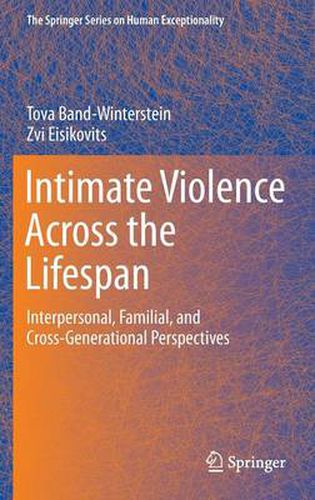Readings Newsletter
Become a Readings Member to make your shopping experience even easier.
Sign in or sign up for free!
You’re not far away from qualifying for FREE standard shipping within Australia
You’ve qualified for FREE standard shipping within Australia
The cart is loading…






This title is printed to order. This book may have been self-published. If so, we cannot guarantee the quality of the content. In the main most books will have gone through the editing process however some may not. We therefore suggest that you be aware of this before ordering this book. If in doubt check either the author or publisher’s details as we are unable to accept any returns unless they are faulty. Please contact us if you have any questions.
Evidence pertaining to continual violence throughout the life cycle coupled with the experience of growing old in a life permeated by intimate violence is scarce. And the focus is usually on the victims
usually, the older, battered women
and seldom on their aging partners or adult children who were part and parcel of the violent dynamics in the family system. With the increase in longevity and the older population’s subsequent growth in size, the number of elderly couples living and aging in long-lasting conflictive relationships is on the rise.
The relatively intense preoccupation with elder abuse in the gerontological literature in recent years has not specifically addressed long-term intimate violence among the old adults and its lasting consequences. Similarly, the literature on intimate intergenerational relationships in old age has usually focused on normative exchanges between partners and their extended family, including their adult children. Therefore, conflictive relationships, and particularly violent ones, have also fallen outside the scope of this body of research. This volume describes and analyzes the various perspectives of family members concerning life, and particularly old age, in the shadow of long-term intimate violence. It explores how people make sense out of living and aging in violence, how interpersonal, familial and cross-generational relationships are perceived and reconstructed and how we-ness is achieved, if at all, in such families.
$9.00 standard shipping within Australia
FREE standard shipping within Australia for orders over $100.00
Express & International shipping calculated at checkout
This title is printed to order. This book may have been self-published. If so, we cannot guarantee the quality of the content. In the main most books will have gone through the editing process however some may not. We therefore suggest that you be aware of this before ordering this book. If in doubt check either the author or publisher’s details as we are unable to accept any returns unless they are faulty. Please contact us if you have any questions.
Evidence pertaining to continual violence throughout the life cycle coupled with the experience of growing old in a life permeated by intimate violence is scarce. And the focus is usually on the victims
usually, the older, battered women
and seldom on their aging partners or adult children who were part and parcel of the violent dynamics in the family system. With the increase in longevity and the older population’s subsequent growth in size, the number of elderly couples living and aging in long-lasting conflictive relationships is on the rise.
The relatively intense preoccupation with elder abuse in the gerontological literature in recent years has not specifically addressed long-term intimate violence among the old adults and its lasting consequences. Similarly, the literature on intimate intergenerational relationships in old age has usually focused on normative exchanges between partners and their extended family, including their adult children. Therefore, conflictive relationships, and particularly violent ones, have also fallen outside the scope of this body of research. This volume describes and analyzes the various perspectives of family members concerning life, and particularly old age, in the shadow of long-term intimate violence. It explores how people make sense out of living and aging in violence, how interpersonal, familial and cross-generational relationships are perceived and reconstructed and how we-ness is achieved, if at all, in such families.